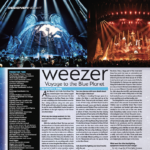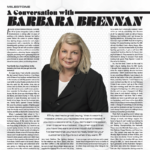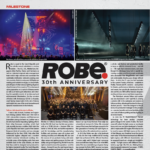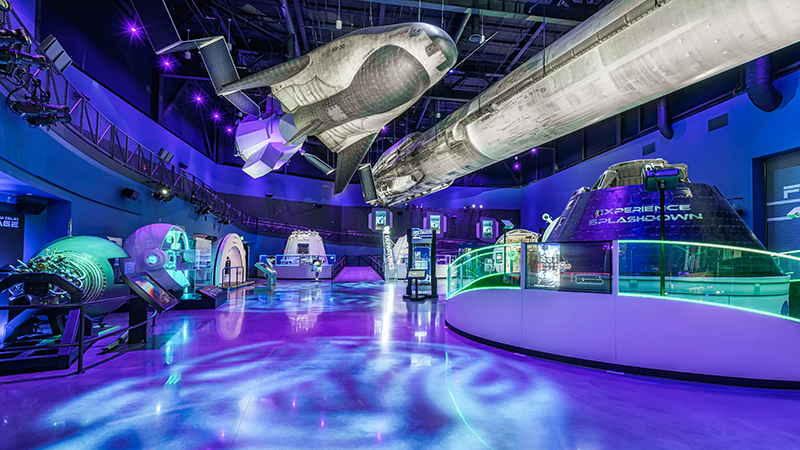
The design collective, Lightswitch is celebrating its 30th anniversary this year as they were officially formed in 1993. Over those three decades, the collective has moved well beyond just lighting and now positions the firm as ‘lighting, media, and visual designers’, with six offices. PLSN spoke with the two Founding Principals—John Featherstone and Norm Schwab about hitting this impressive milestone, the culture of the collective, and why they believe clients trust Lightswitch.
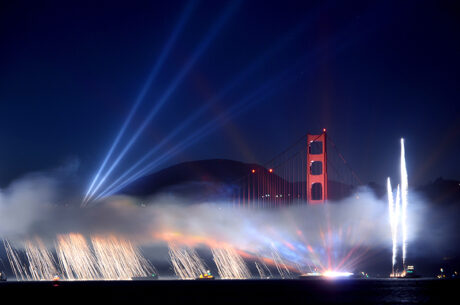
How did you come to work together, and how did Lightswitch come to be?
John Featherstone: It was a car show on ice.
Norm Schwab: The day the stock market crashed, Monday, October 19, 1987. Everyone walked into Detroit’s Cobo Hall as depressed as we’ve ever seen people walk in. But then of all things, they saw a car show with world famous ice skaters and I remember the audience walking out really happy.
JF: At the time, I was in the U.S. from a leg of a concert tour, and I had some time left on my work permit. I was working with Upstaging and John Huddleston, who cast a big shadow on my life—and continues to do so. He asked if I wanted to stay over to do a ‘corporate show’. I had no idea what a corporate show was, but John said it was like a rock show, but with cars instead of musicians. He was working with Norm Schwab from FM Productions, and they needed someone as a project management liaison. So, he sent me out to San Francisco to meet, and work with Norm. We stayed friends over the years, and Norm kept saying I’d get sick of being on the road, we should set up a design company. I was fine until I had my first daughter and tried to go on the road with Van Halen; then I realized this doesn’t work. So, Norm and I had a long talk and we hatched this plan that would become Lightswitch.
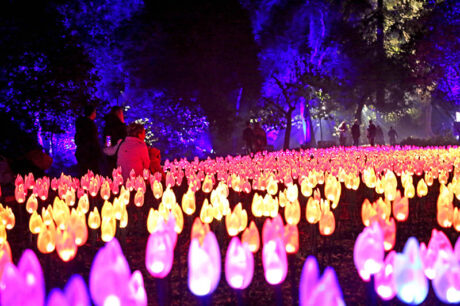
What’s an early project that moved Lightswitch forward?
NS: I think one of our very first, was probably a Sun Microsystems job at the Moscone [Convention Center]. It was crazy. They took over the Moscone and invented a fake company. They did a keynote and revealed the company. They made up portions of this company all through Moscone, and the audience would walk through. They were trying to show how Sun Microsystems’ computers helped different parts of the company. Literally, it was almost like a Disney ride, but you walked through it all. They had our client, one of the producers, in costume working on the loading dock.
JF: I would say that job, and also the big Apple thing in Vegas.
NS: Yes, the Apple thing… I’d been working with Apple since 1984 and the launch of the Macintosh. Apple doesn’t do them anymore, but this show was huge, with keynotes, booths, breakout rooms. It was monstrous. It was one of those shows, I think, that speaks to why we got together as a company. Projects were getting much bigger, and we really felt that we needed a large group of people to work on them. Certainly, there were other firms that formed a larger group based around design, but at that point it wasn’t popular. We realized that as projects got bigger, and the needs got bigger, having a team of people around you really helps you, both to do more work, but to stay sane. Also, if you’re into collaborating, it’s an amazing idea.
JF: We identified a bit of a change, certainly in the corporate market, but a change in experiential design in general. Up until the time when we really started to get into those corporate shows at scale, they were either plain keynote presentations, or basically booth shows. It was like some variation of a cheesy Broadway musical with dancing aspirins and all that kind of stuff. The Sun Microsystems show was the first that pulled together, that I’m aware of, a bit of rock ‘n’ roll, a bit of themed environment—all these different aspects of live event production. Norm and I thought—with either good luck or prescience—it was going to be a trend we would see going forward. C-Suite executives were now of a generation that was influenced by live music and that level of engagement. They wanted that kind of excitement in their shows. The same applies to restaurants, hospitality, and all that as well.
And Fremont Street, I think that’s also a good example of what we’ve always tried to do with Lightswitch; to have it be a consortium that wasn’t, at the time, specifically Featherstone, Schwab, or it would now be Featherstone, Schwab, Malkus, Werner, Elich, Kong or Medvitz. Fremont Street is a great example of that because they were very comfortable that it’s Lightswitch when we said, “Okay, on the occasions when Norm couldn’t be there, I would be there. Some other members of our team would be there.” The client had a level of comfort, and I think what it enabled us to do is build the brand as an equity piece of trust and we hope offer excellence beyond just the individual’s name. As we’re starting to see those of us, Norm and I and some of the other partners, not retiring for a hot minute, but having an eye on what the next stage of the company looks like. That kind of transition is something that I think is going to stand us in good stead as we go forward, and it’s a company that has brand equity of its own rather than being named after the principal.
Norm and I have always aspired to bring as many voices to projects as possible because it just makes for a richer creative solution pulling all those threads together. Everybody’s always interested in what’s going on in other environments. We go in and talk to an architectural company, and they’re interested in what we do architecturally, but they’re fascinated with what we do in theme parks. We go talk to the theme park guys, and they’re like, ‘Yeah, yeah, we know you guys do theme parks, we’re interested in the entertainment stuff’. The entertainment clients are really interested in the architecture stuff. So, there’s all this cross pollination of ideas; and we get that by pulling together a team.
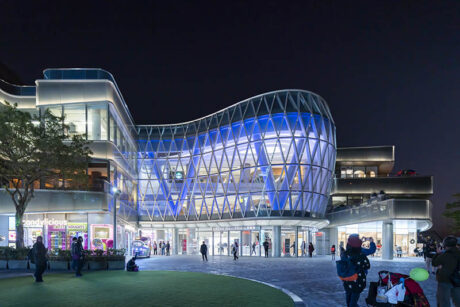
You have a lot of loyal clients. What do you feel they value about working with Lightswitch?
JF: I think we put authenticity and honesty above anything else. A big mantra for Lightswitch internally is somewhat glib sounding, but true—’we’ll always say what we think, but then we’ll always do what you want’. It comes down to clients feeling that you are their ally, their advocate, and a source for creative ideas. That’s why we’ve segued into being more of a visual design firm in terms of how we position ourselves. As the company’s matured, and I use the word very loosely, the lines around lighting have become very fuzzy. I think what people look to Lightswitch for is ‘Hey, we’re trying to do this. Can you guys do this?’ We’ve become allies and advocates for our clients and our range of services reflects that.
The other thing that I think is important—and we’ve stayed true to this as an early pledge that Norm and I had—we don’t get in the middle of the equipment side. We are open and transparent about our fee for services and being our clients’ allies and advocate. We robustly bid projects out. We manage them for our clients, but we don’t get in the middle of the gear. That’s a business model that works well for some other designers but it’s something that we decided was not for us. In speaking with our 20-30 year clients, they comment that they know we’re spending their money as wisely as if it was our own. They know what they’re paying for, and feel they get value for that service.
NS: I think to add to that, we let our clients know, and I think they feel this, that we understand their priorities. We can help them basically navigate through what we’re doing to meet their priorities. One of our things is that we want to make our clients as excited as we are about their project. When we take on a project, we really come at it with the wish to provide a sense of wonder and awe. We always want to our client to understand that we want to bring that to their project and that they can collaborate with us and be part of a fun process.
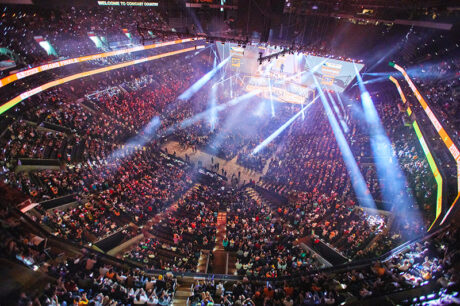
What do you hope people in the industry understand about Lightswitch today?
JF: That we are a trusted source of impartial, unbiased advice. That we hope people have seen that as the company has grown and evolved. That it’s an aspirational place to either collaborate with, or work for. Obviously, being a company that’s 30 years old is a double-edged sword. The good news is, we’re 30. The bad news is, we’re 30. I remember when I thought about 30 years in the future, it was like, ‘Oh my God, I’ll be in a retirement home’. The fact that I have a company that’s 30 years old, much less a daughter that’s 30 years old, is astonishing to me.
What I would hope, is that people see that, to paraphrase my countryman, Isaac Newton, ‘If I’ve seen further, it’s because I’m standing on the shoulders of giants’. I hope that Lightswitch in 30 years is viewed as something that new designers can come in and stand on that 30 year legacy. Know they have that breadth of experience, but they can see further. Any of these amazing young designers we have in our practice. One of the things I enjoy most is seeing these astonishing people do incredible work and be fueled by that energy that we’ve created as a company. So Lightswitch is both trusted and aspirational.
NS: I think John covered it very well. We had no idea what we were getting ourselves into. Over the years we really have together built an organization, and we’ve learned so much about how to try to manage a group of people, how to make decisions, how to weather a pandemic. That force of collaboration and family. These days, I think there’s a better emphasis on mental health. So, having a group of people that can cover each other’s back, share and learn, that has been our goal. I think most of the time we achieve it. It’s what attracts certain people to us. What I think I’d love to have people think about us, and maybe learn from us, is that ability to collaborate and the strength of collaboration.
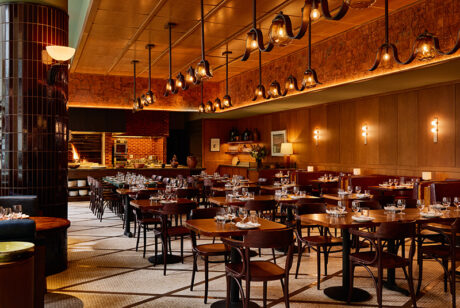
Talk about the Lightswitch team, the expertise they bring, and how that translates into client support.
NS: I think one of the interesting ways we run our company is that each office is actually, for the most part, run by an individual designer. So, we have control locally, but then we pull together globally. Some offices have literally one person in them and some of them, such as my office, has 16 people, plus we have permalancers that also add to that at times.
That approach is our strength, but also sometimes it’s our craziness, of trying to get everyone together to make a decision. We have people that are going off and doing their own thing at times, which we know adds to our strength. We also have large groups of people in offices and then maybe several offices will collaborate. So, on several projects we’re working on, theme park projects and the like, we can have three offices, with 30, sometimes 40, people working on a project. Somebody can go off and do a personal project or a Broadway show, that has very little to do with the rest of the company, and then other times, we are all collaborating on a certain project, like we just did a show where I needed media design. So literally, we ‘borrowed’ from John’s office, people that mostly work for him. It really goes to the idea of how we work as a company and that sometimes it is frustrating when people are off doing personal projects, but that is also one of the most amazing things, because that has allowed people from a variety of backgrounds to all come together. We’re only stronger for it.
JF: It’s this sense of community and it’s about figuring out the right team to serve the needs of the project and the client, because every job is different and unique. Clients, certainly at the moment, only have two timelines—not now and right now. Frequently, right now hits at a really bad time. So, having those kinds of resources and understanding what people in the company want to do; understanding that we aspire to be, more than anything else, a creative facing company.
One of the challenges we have running the company is all the partners still want to do shows, which is a real double-edged sword. The great news is that that keeps us close to the coalface, as we say in the UK, and focused on understanding what clients need, what’s going on with the company day in, day out from a grassroots standpoint. From a management standpoint to Norm’s point, I’m stuck here in Vegas doing a show, and Norm’s not long back from Egypt. We get scattered to the four winds and then it’s hard to get the group together to move things forward, but we believe that’s worth the price.
That ripples out through the whole company, that people are busy and following their passions, but it’s great when somebody comes to us and says, ‘I see all this theme park stuff going on. I’d love to know more about that, or the rock and roll stuff.’ That acumen in what other people are doing is a real big part, we think, of what keeps our projects fresh, because you’re pulling in all these new influences. Sometimes somebody comes in who’s less familiar with the working modalities and questions it. You go, ‘that’s actually a really good point. If you get too close to it, you get this thing that I call ‘creative vapor trail’, but you’re doing something now because it made sense six months ago in the product and somebody else comes in and goes, ‘why are you doing this? It makes no sense’, but you hadn’t realized it. We all do that for each other, it is how we all learn; collaboration.
What are some key projects that Lightswitch has supported recently?
JF: Well, I’m here in Vegas working on a project called Voltaire. It’s an interesting take, in some ways it’s sort of the anti-Sphere, not that that’s anything wrong with The Sphere. But this is a very small, intimate, cabaret-esque nightclub space. It combines aspects of a really amazing re-interpretation of what you could say was an art deco-influenced environment for a club that also has an amazing performance aspect for residence into which headline acts are inserted. Kylie Minogue being the first and just recently they announced that Christina Aguilera is going to be the second. It’s very small—1,000 seats—a very intimate space, very close to the artist, but a whole evening woven together from all these elements overlapping. We’re very excited about that, and we are doing both the architectural design and the performance lighting system design for that.
And we’re right on the cusp of getting into our holiday garden lighting season, which has turned into a really busy segment for us. I’m heading back to work on the Morton Arboretum; Hailey, who’s here working with me on Voltaire, has her show, Forest of Lights; and two other of our partners, Chris Medvitz is doing Descanso Gardens in LA; and Warren Kong has a number of experiences for the Gaylord Hotel organization. It’s a busy end of the year. So again, a real breadth, diversity, of projects.
NS: And in our office, we have a number of projects, one of which is an entire city that is a video game, where you live and play and work amidst the video game. The scope is immense. We have projects of that size, along with really fun little Michelin-starred restaurants spaces that are opening. So, from 5,000 sq. ft. to millions of square feet, all of which have aspects of everything we were trained in for show design, but in the built environment. These projects need to be amazing, have to be performative, and have to be interactive.
So, in conclusion, how does it feel to be part of Lightswitch?
NS: Like so many things, I can’t see doing anything else at this point, and I can’t picture having another outcome to what I would’ve done. For whatever reason, none of this surprises me, though I do feel blessed, very fortunate. Surviving the pandemic, surviving some serious issues of individual partners, dealing with deaths; we are all stronger as a family. It is usually really good, not always, like I said, trying to get seven or eight people to make a decision at once can be interesting, but on the other hand, when we need to rally, Lightswitch is really a pretty good team at rallying around.
JF: I’m a pretty optimistic kind of person, but I didn’t think we would last 30 weeks. The fact that 30 years ago, Norm and I had an idea and we stayed true and authentic to that, and I get to work with my best friends—the rest of the partner group, is pretty amazing. I think one of the reasons why we’re such a solid business is I get to work with these amazing people day in, day out. With my studio, not only are my friends working with me, but now my daughters and my son-in-law are involved with the business. I’m so incredibly fortunate that we’ve managed to build this company, and as Norm said, far from perfect. There are a lot of challenges, there are a lot of things we do wrong. We’re making this sh*t up as we’re going along and we’re doing it by being focused; based on people and the work and the quality of life of everybody. We’re not in the business of running a business. The fact that we have an enterprise of which the people working for us make us so proud, do such amazing work, and support and nurture each other in ways that is truly remarkable. I’m right with Norm. I couldn’t imagine doing anything else and I couldn’t be happier.
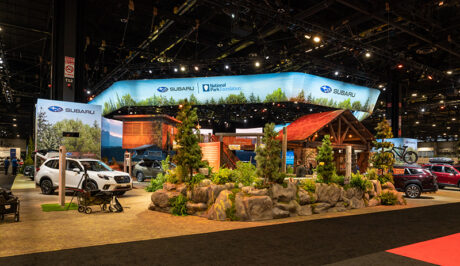
The Lightswitch Partners
Tyler Elich, Principal
I think one of the most important things clients value about working with Lightswitch is our pragmatic design approach. I have heard countless times, clients who are frustrated with hiring designers that come up with amazing concepts, but there is no way to actually realize the design because of budget, timeline, or physics. At Lightswitch we really pride ourselves on listening to the client and not only providing what they asked for, but making it even better, coming in on time, and right on budget. If we design something that can’t fit into the venue, or will take too much time, then we have failed the client and the brief. Our interests and incentives are always aligned to both putting together the best design and getting the best deal.
Lightswitch is unique in the way we can offer our clients both 30 years’ worth of experience (hundreds of years if you put together our collective experience), our deep bench of both staff and vendor resources, and our cross discipline functionality. I don’t know of any other design firm that has worked cohesively as long as we have. We have experience not just working in design, but also working together as a team. If you hire one of our studios, you are not only getting that principal working on your design, but you are also getting the collective knowledge of all the principals and staff at Lightswitch.
Warren K. Kong, Principal
I think clients value our relationship and commitment to their vision, our expansive breath of knowledge, and our willingness to experiment with their ideas. We love what we do, we are in a passion industry, and it shows. It translates to the clients by the emotional connection we make to our audiences.
Brad Malkus, Principal
I think our clients appreciate the fact that we focus on the budget and schedule of their projects as much as we do on the creative aspects of them. Our wide range of experience across all segments of lighting and media design also appeals to our clients because it helps us find new and exciting ways to approach their projects.
I think the fact that we are a design-only firm helps our clients feel confident that we are suggesting ideas and products because they are right for their projects. Our success is based on keeping our clients happy—not equipment sales. Also, we like to stay with projects all the way through to the end to make sure that the clients’ vision—and ours—are achieved. I believe these factors are why we have so many long-term clients.
I am very proud of the team we have built and the amazing portfolio of work that we have created together. I also feel that we have been a very active part of the growth and maturity of the lighting design profession. This business looks very different than it did in the 1970’s when I started.
Chris Medvitz, Principal
I think Lightswitch represents what we call “Pragmatic Design,” which is a conscious balance of creative, financial, and logistical objectives. We believe designers have a responsibility to work within clients’ reality and while we often are tasked with taking big swings creatively, this also has to be feasible within the constraints of cost and feasibility. We treat our clients’ money as if it were our own and we pride ourselves on creating successful solutions that hit all these objectives.
I think the fact that we are so broad in our expertise as a team really allows us to cross-pollinate ideas and best practices across our work in entertainment, experiences, events, museums, and architecture. Our combined experience and capability mean that we have varied perspectives on any given situation whether it’s creative ideas or execution methodology, in-house support or onsite client and partner cohesion. It’s like crowdsourcing but within a like-minded community with the same goals, and a shared interest to succeed.
I think being part of Lightswitch, our particular alchemy is based on a structure that allows the Principals to build their individual studios to support their own goals. The fact that we aren’t obligated to pursue or engage in work that we don’t want to, or to undergo endeavors that aren’t in our individual interest, really results in a sense of autonomy that I believe is what has kept us together for so long. I have the utmost respect for this organizational structure because of this, and I’m extremely proud both of what we’ve accomplished over the decades, and that we have sustained and remained relevant.
Howard Werner, Principal
I think that our clients value the wide ranging experience from our different markets that we bring to every job we do. Our clients see that we’ve been well established for a long time and I think that the wealth of experience on so many projects leads to building client confidence.
As for being part of Lightswitch, there’s strength in numbers. As an independent freelancer, like mostly theatrical designer before my time with Lightswitch, I really had no one to bounce ideas off of. Now, I have a whole organization to reach out to for creative or business input. It’s a world of difference to know that we have one another’s backs.

